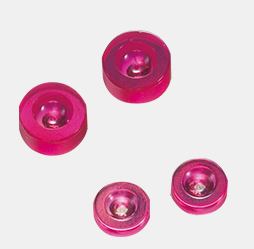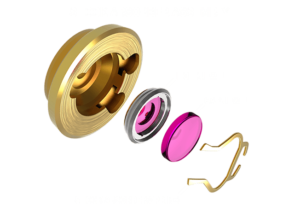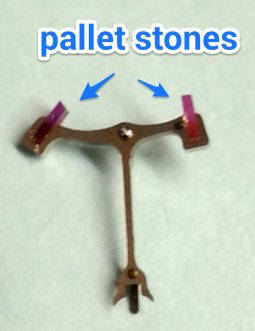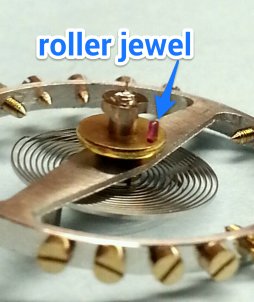Watch Jewels
The Purpose of Jewels in Watches
Synthetic rubies (sometimes synthetic sapphires) are used as bearings at the heaviest points of wear in a watch movement in order to reduce friction between moving parts and increase a movement’s lifespan. Jewels have a naturally slicker surface than metal. Jewels are only used to increase the accuracy of the movement and are not for decoration.
Types of Watch Jewels
- Hole-jewels
- Cap-jewels
- Pallet-jewels
- Impulse/roller jewels
Hole-jewels:
A hole jewel is a type of jewel with a hole bored into it so that it can be mounted on the wheel’s axle or pivots such as a cylindrical pivot or a conical pivot. It usually has a slightly rounded top or with a flat bottom.

Cap-jewels
A cap jewel is a type of jewel without a hole bored into it which is used to minimize the balance staff’s movement. Cap jewels usually are used in conjunction with a pivot jewel and have a type of shock protection in place such as a spring at each end. This protects the watch in the event that the watch is dropped or gets hit by something while being worn.

Pallet-jewels:

Impulse (roller) jewel:

Typical Jewel Placement in Watches:
Jewels can be placed anywhere the watch components move against each other. Jewel placement can also be asymmetric for the appearance of additional jewels.
